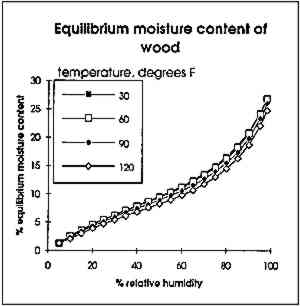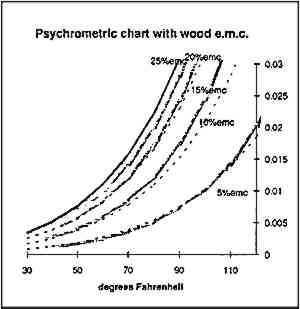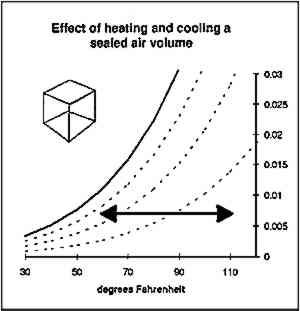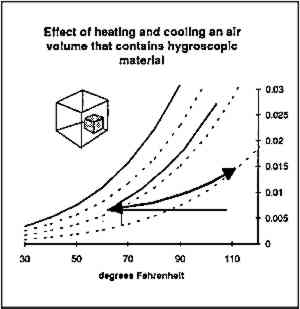EFFECTS OF CLIMATE CONTROL ON THE MUSEUM BUILDING ENVELOPEWILLIAM ROSE
4 SORPTIONMost organic materials and many mineral materials are hygroscopic, that is, they adsorb and desorb moisture, and they have a measurable moisture content. They are also porous, and so the air entrained within the materials can be monitored for temperature and humidity. The moisture content can be measured by standard gravimetric techniques (successive oven drying and weighting), and the results can be compared against temperature and
Sorption data for other materials are readily available (IEA 1991). Overlays of lines of constant moisture content for other materials can be prepared easily from the data or from charts of sorption isotherms. Such overlays can be very helpful: they can indicate the moisture content of materials in a building envelope assembly if the temperature and humidity are known at any point in that assembly. It is readily apparent that the lines of constant moisture content correspond closely to the lines of relative humidity. The aim of museum environments is to maintain close to constant moisture content in the artifacts; thus, maintaining somewhat constant relative humidity is desirable. Artifacts and their environment are in a constant state of moisture exchange, sometimes driven by temperature, sometimes driven by differing vapor pressure. The effect of this exchange is illustrated in figures 5, 6, and 7. Figure 5 shows heating and cooling of a sealed air volume. No moisture is added or subtracted by changing temperature. Figure 6 shows the psychrometric effect of heating and cooling a sealed hygroscopic material such as wood. The line shown represents constant moisture content, because in a sealed material no moisture moves across the outside seal. Both of these conditions are ideal. The real-world condition is that shown in figure 7, in which a hygroscopic material is surrounded by an air volume. This example corresponds to an artifact in a case or furnishings in a room. As the case or room is heated and cooled, the psychrometric conditions would follow a curve somewhere between the curves indicated in
Given that relative humidity can be changed by heating, cooling, wetting, or drying, it is evident that moisture content of hygroscopic materials can be changed by the same four processes. |




